《分子结构理论 英文版》
| 作者 | 江元生著(南京大学) 编者 |
|---|---|
| 出版 | 北京:高等教育出版社 |
| 参考页数 | 345 |
| 出版时间 | 1999(求助前请核对) 目录预览 |
| ISBN号 | 7040076861 — 求助条款 |
| PDF编号 | 810391118(仅供预览,未存储实际文件) |
| 求助格式 | 扫描PDF(若分多册发行,每次仅能受理1册) |
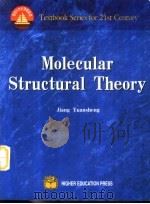
Chapter 1Quantum Theory1
1.1 Classical Description of Particles and Waves2
1.1.1 Newtonian mechanics2
1.1.2 Waves3
1.2 Particle Behaviors of Waves6
1.2.1 Black-body radiation6
1.2.2 Photoelectric effect7
1.3 The Wave Behaviors of Particles9
1.3.1 The de Broglie hypothesis9
1.3.2 Electron diffraction9
1.3.3 The uncertainty principle11
1.4.1 Wave functions13
1.4 The Schr?dinger Equation13
1.4.2 The Schr?dinger equation15
1.4.3 Dynamical variables and expectation values17
1.4.4 The stationary state18
1.5 Simple Systems19
1.5.1 One-dimensional free particles19
1.5.2 Particles in one-dimensional potential box20
1.5.3 Particles in three-dimensional potential box25
Appendix 1.1 Operators and Hermitian Operators27
Appendix 1.2 Physical Constants and Conversion Factors of Energy Units30
Exercises31
Chapter 2Atoms35
2.1 The Hydrogen Atom36
2.1.1 The Schrodinger equation36
2.1.2 Angular wave functions38
2.1.3 Angular momentum43
2.1.4 Radial wave functions45
2.1.5 Energy levels and wave functions47
2.2 Helium Atom50
2.2.1 Atomic units50
2.2.2 The orbital approximation50
2.2.3 Electron shielding effect52
2.2.4 The repulsive potential53
2.3 Pauli Exclusion Principle54
2.3.1 The spin of electrons54
2.3.2 Pauli exclusion principle55
2.3.3 Hund rule57
2.4.1 Configuration58
2.4 Many-Electron Atoms58
2.4.2 Slater orbitals59
2.4.3 Terms60
2.4.4 The term energy61
2.4.5 Terms of(np)262
Appendix 2.1 Operators in Spherical Polar Coordinates65
Exercises68
Chapter 3Diatomic Molecules71
3.1 The Interactions between Atoms72
3.2 Hydrogen Molecular Ion and Hydrogen Molecule76
3.2.1 Symmetry of homonuclear diatomics76
3.2.2 The LCAO scheme79
3.2.3 The hydrogen molecule83
3.3.1 The variation method85
3.3 Molecular Orbital(MO)Method85
3.3.2 The simple molecular orbital method87
3.3.3 The principles of bonding88
3.4 Homonuclear Diatomic Molecules90
3.4.1 Construction and classification of molecular orbitals90
3.4.2 Energy level sequences93
3.4.3 The orbital symmetry correlation94
3.4.4 The ground state96
3.5 Heteronuclear Diatomic Molecules98
3.5.1 The comparison with homonuclear diatomics98
3.5.2 A review on the correlation diagram101
3.6 The Valence Bond(VB)Method102
3.6.1 The wave function of H2102
3.6.2 The valence bond method104
3.6.3 The diatomic molecules107
3.6.4 The relationship between the molecular orbital approximation and the valence bond approximation108
Appendix 3.1 The Evaluation of Integrals in the Treatment of H2+110
Exercises111
Chapter 4Symmetry and Group Theory115
4.1 Symmetry Operations and Symmetry Elements116
4.1.1 Geometrical significance116
4.1.2 Multiplication of symmetry operations117
4.2 Matrix Representation and Properties of Symmetry Operations118
4.2.1 Matrix representation118
4.2.2 Properties of symmetry operations123
4.3 The Group125
4.3.1 Definition125
4.3.2 Conjugate classes126
4.4 Classification of Point Groups127
4.4.1 The cyclic group127
4.4.2 Acyclic groups involving a rotational symmetry axis128
4.4.3 Point groups with several rotational symmetry axes129
4.4.4 Point groups of linear molecules130
4.4.5 Symmetries of molecules131
4.5 Group Representations131
4.5.1 Reducible and irreducible representations131
4.5.2 Properties of irreducible representations133
4.6 Group Theory and Wave Functions136
4.6.1 Symmetry of wave functions136
4.6.2 Symmetry and molecular orbitals137
4.6.3 Direct product141
Appendix 4.1 Character Tables of Some Typical Point Groups143
Exercises148
Chapter 5Polyatomic Molecules152
5.1 Molecular Orbitals and Energy Levels153
5.1.1 Introduction153
5.1.2 H2O154
5.1.3 BH3158
5.1.4 CH4159
5.1.5 C2H4161
5.2 Molecular Geometry163
5.2.1 Walsh rule163
5.2.2 AH2164
5.2.3 AH3165
5.2.4 Other types of molecules166
5.3.1 Localization of chemical bond167
5.3 Valence Bond Orbitals167
5.3.2 The influence of hybridization on bond angles168
5.3.3 sp-hybridization170
5.3.4 sp2-hybridization171
5.3.5 sp3-hybridization173
5.3.6 Hydrocarbons175
5.3.7 Non-equivalent hybridization176
5.4 The Bond Lengths177
5.4.1 Experimental data177
5.4.2 Variation of C-H bond length178
5.4.3 C-C bond lengths and hybridizations179
5.5 Valence-Shell Electron Pair Repulsion(VSEPR)Theory181
5.5.1 The VSEPR rule181
5.5.2 The lone-pair orbitals and molecular geometry183
Exercises184
Chapter 6Conjugated Molecules187
6.1 The Hückel Molecular Orbital Method189
6.1.1 The Hückel theory189
6.1.2 Linear polyenes191
6.1.3 The cyclic polyenes195
6.2 More about Energy Levels and Molecular Orbitals199
6.2.1 Bound and sum of energy levels199
6.2.2 Alternant hydrocarbons200
6.3 Electron Densities and Bond Orders203
6.3.1 Atomic charges203
6.3.2 Bond orders204
6.3.3 Free valence206
6.4.1 The resonance energy207
6.4 Aromaticity207
6.4.2 The eight-parameter scheme209
6.4.3 The five-parameter scheme210
6.5 Chemical Reactions211
6.5.1 Frontier orbitals211
6.5.2 Odd alternants215
6.5.3 Orientation of electrophilic aromatic substitution216
6.5.4 Pericyclic reactions217
6.6 Conjugated Molecules Containing Hetero-atoms221
Exercises223
Chapter 7Transition-Metal Complexes227
7.1 Atoms and Orbitals in Electrostatic Field229
7.1.1 Square ligand field229
7.1.2 Octahedral field230
7.2 Group Theoretical Analysis233
7.2.1 Orbitals233
7.2.2 Splitting of terms236
7.2.3 The strong field scheme238
7.2.4 The correlation diagram241
7.3 Optical Spectra and Magnetic Properties243
7.3.1 The absorption spectra243
7.3.2 The spectrochemical sequence245
7.3.3 High-spin and low-spin complexes246
7.4 Stereochemistry249
7.4.1 Lower coordinations249
7.4.2 Jahn-Teller distortion251
7.5.1 б-bonding253
7.5 Molecular Orbital Treatment253
7.5.2 d2sp3 hybridization256
7.5.3 Eighteen-electron rule257
7.6 π-Bonding and Covalent Complexes259
7.6.1 Picture of π-bonding259
7.6.2 π-ligands and related complexes260
Exercises264
Chapter 8Cluster Compounds and Bare Clusters267
8.1 Main Group Cluster Compounds269
8.1.1 Polyhedral hydrocarbons CnHn269
8.1.2 Boron hydrides270
8.2 The Three-Center Bond272
8.3.1 B6H?277
8.3 Molecular Orbital Treatment277
8.3.2 B5H9(B5H?)280
8.3.3 Main group cluster compounds and clusters282
8.4 Transition-Metal Cluster Compounds283
8.4.1 Tri-degree cores283
8.4.2 Isolobal similarity285
8.4.3 Electron counting rules286
8.4.4 Capped polyhedra288
8.4.5 Conjunctive cluster molecules289
8.5 Metalloboranes and Organometallic Cluster Molecules291
8.5.1 Mixed-type cluster molecules291
8.5.2 Conjunctive mixed-type cluster molecules293
8.5.3 Inconformity to 18-electron rule294
8.6.1 Introductory remarks295
8.6 Bare Clusters295
8.6.2 Alkali-metal clusters296
8.6.3 Carbon clusters299
Exercises302
Chapter 9The Solids304
9.1 Electrons in Long-Chain Molecules306
9.1.1 Model molecules306
9.1.2 The group Cn307
9.1.3 Energy levels and energy bands309
9.2 Bands and Bloch Functions311
9.2.1 The Bloch function311
9.2.2 The meaning of k312
9.2.3 Bands314
9.3.1 Band structures317
9.3 A Survey of Polymer Chains317
9.3.2 K2Pt(CN)4319
9.3.3 The Fermi energy323
9.4 The Density of States323
9.5 The Peierls Distortion325
9.5.1 Dimeric unit325
9.5.2 Peierls distortion328
9.6 The Two-Dimensional Lattices330
9.6.1 Bloch function330
9.6.2 The Brillouin zone332
9.6.3 The band structure333
Exercises337
References339
Index342
1999《分子结构理论 英文版》由于是年代较久的资料都绝版了,几乎不可能购买到实物。如果大家为了学习确实需要,可向博主求助其电子版PDF文件(由江元生著(南京大学) 1999 北京:高等教育出版社 出版的版本) 。对合法合规的求助,我会当即受理并将下载地址发送给你。
高度相关资料
-

- 原子价与分子结构
- 1981 北京:人民教育出版社
-
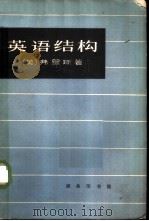
- 英语结构 英语句子构造导论
- 1964年10月第1版
-

- 英语结构 英语句子构造导论
- 1964 北京:商务印书馆
-

- 结构振动分析的子结构方法
- 1991 北京:中国铁道出版社
-

- 原子核理论 核结构与核衰变部分
- 1989 北京:高等教育出版社
-
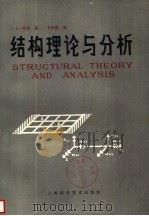
- 结构理论与分析
- 1982 上海:上海科学技术出版社
-

- 结构分析理论
- 1965 北京:科学出版社
-

- 分子的结构及物理性质
- 1960 北京:科学出版社
-

- 英语句子结构和分析
- 1981 北京:外语教学与研究出版社
-
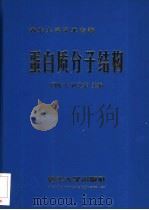
- 蛋白质分子结构
- 1999 北京:清华大学出版社
-
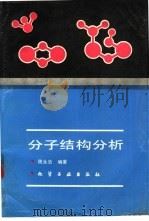
- 分子结构分析
- 1991 北京:化学工业出版社
-

- 结构分析导论
- 1980 北京:科学出版社
-
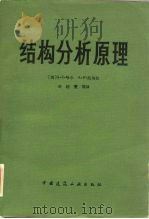
- 结构分析原理
- 1981 北京:中国建筑工业出版社
-

- 角动量理论与原子结构
- 1991 厦门:厦门大学出版社
-

- 高分子链结构
- 1996 北京:科学出版社
提示:百度云已更名为百度网盘(百度盘),天翼云盘、微盘下载地址……暂未提供。➥ PDF文字可复制化或转WORD